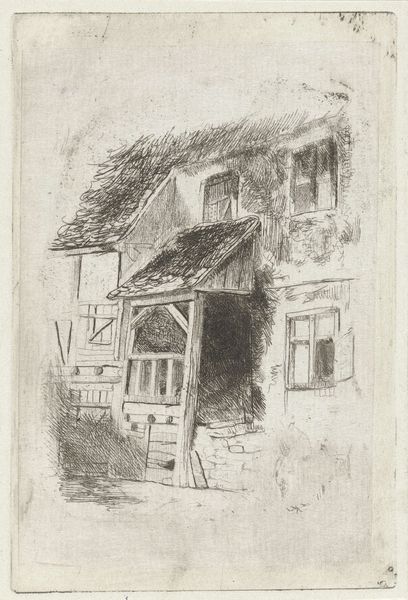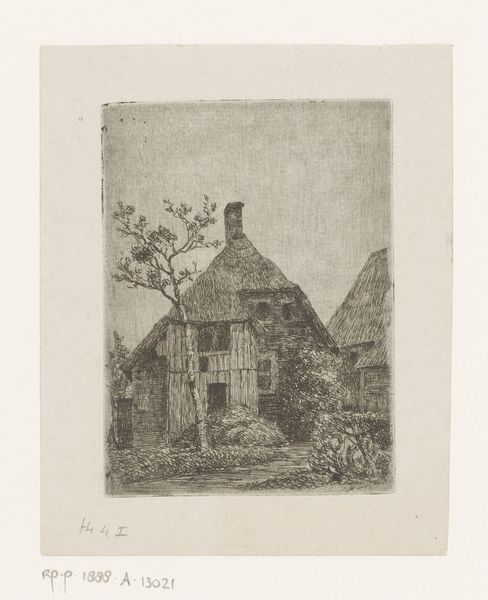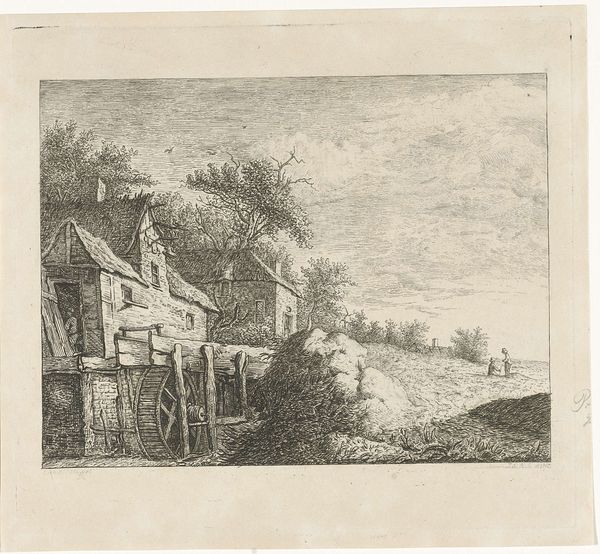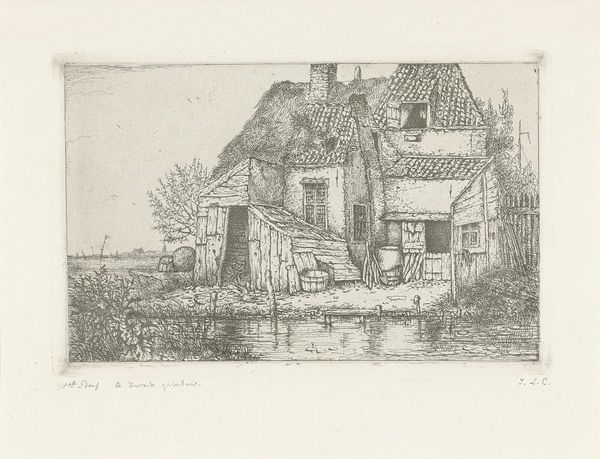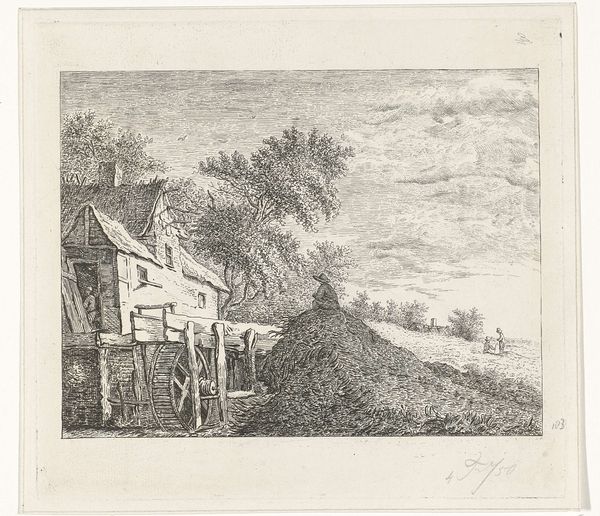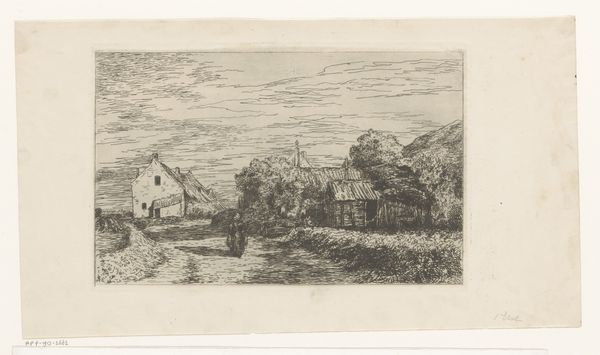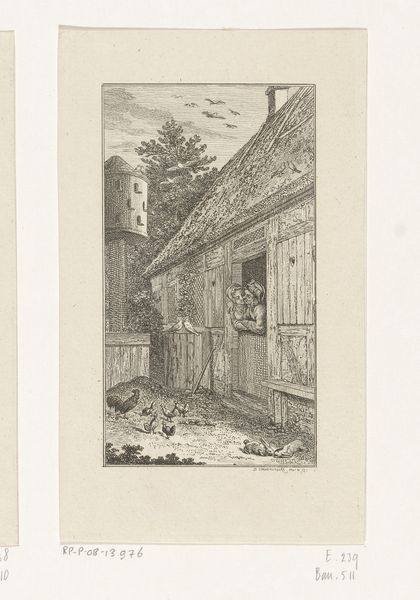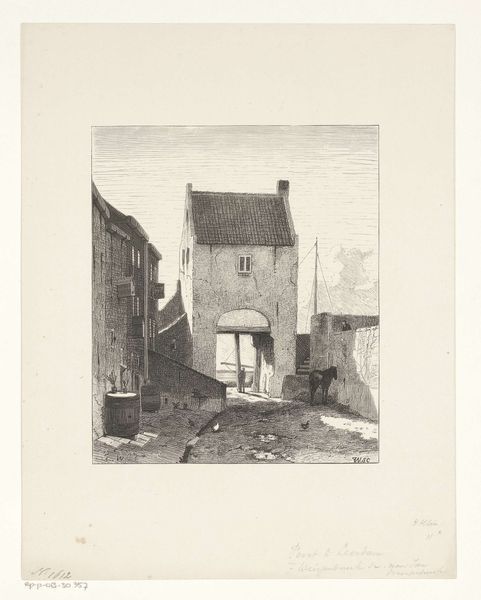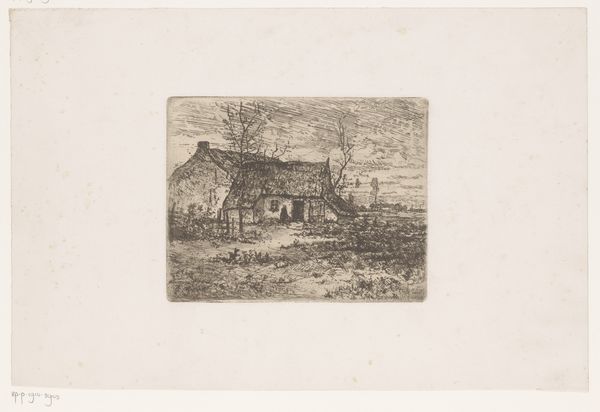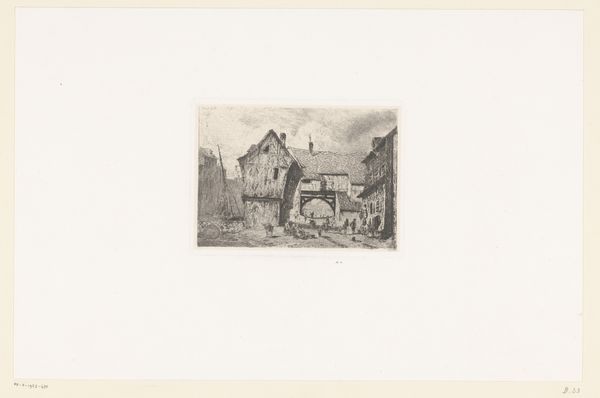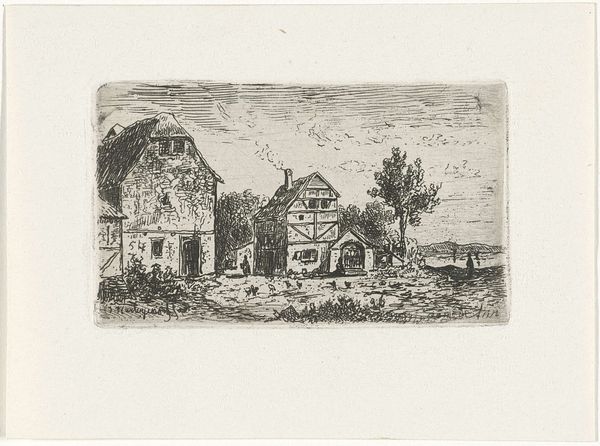
print, etching
# print
#
etching
#
landscape
#
realism
Dimensions: height 82 mm, width 50 mm
Copyright: Rijks Museum: Open Domain
Hans Willem Box created this etching of a watermill sometime in the first half of the 19th century. An etching is made by covering a metal plate with a waxy, acid-resistant substance, then scratching an image into that coating, exposing the metal underneath. When the plate is dipped in acid, those lines are eaten away, leaving an image that can be inked and printed. The medium is critical here: etching was a relatively democratic method of image production, used for both mass-produced illustrations and fine art prints. The image itself shows a technology – the watermill – that was also at a critical stage of development. Watermills had been a primary source of power for centuries, but were beginning to be supplanted by steam engines during Box's lifetime. So, this unassuming little print brings together a now-obsolete technology with an image of another on its way out. It reminds us that all art is made with the materials at hand, and that these always carry a wealth of cultural and historical meaning.
Comments
No comments
Be the first to comment and join the conversation on the ultimate creative platform.

